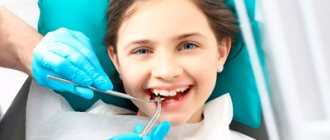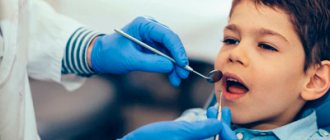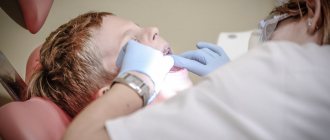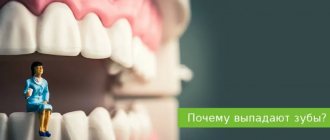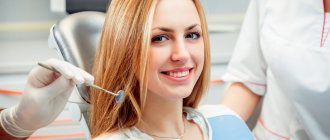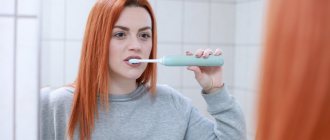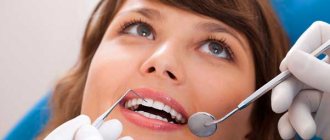Tooth trauma in a child is a common occurrence. Curiosity pushes you to explore the world, and lack of fear and poor coordination of movements lead to falls and hitting your face on the ground.
At least a third of children break or knock out their baby teeth during active games or sports. It happens that when babies learn to walk, they injure their upper and lower incisors by tripping over their own feet. Therefore, it is worth knowing what to do when an incident has already happened.
Act quickly. The tooth can be saved
An injured tooth can be brought back to life if treated as soon as possible.
The work of a pediatric dentist at Idealdent is aerobatics:
- will restore a broken or dislocated tooth;
- splints the mobile group;
- will preserve the nerve so that the damaged dental unit grows and performs functionality.
View prices for pediatric dentistry
Prevention of childhood dental injuries
In order not to encounter the situations described above, you should take care in advance of the safety of the baby’s oral cavity. Remember that some dental injuries can be prevented by using simple protective measures:
- An excellent protection against injury during active games or sports is a helmet that not only protects the head, but also the teeth.
- To protect your child's teeth, use a mouthguard. This simple dental product provides as much as 85% protection.
- Talk to your children about the importance of being careful when playing. But don't intimidate them.
- Teach your child to fall without injury. Demonstrate how to tuck to avoid head and neck injuries.
- Provide your baby with healthy nutrition with all the necessary vitamins and microelements.
- Teach your child to brush their teeth regularly and visit the dentist every six months.
If you still failed to protect your baby from injury, you should contact your dentist as soon as possible. You can get qualified help at Aesculapius dentistry. In our dentistry you will find first-class equipment and modern treatment methods.
Four specialists work in one shift and they know their job very well. We work with each patient on an individual basis and provide a guarantee for all services. Absolutely all clients are satisfied with the level of service.
What should parents do when their child knocks out a tooth?
If your baby comes with a broken tooth in his hand, don’t panic and don’t scare him with your reaction. The gums contain a large number of capillaries, so the bruise sometimes looks more serious than it actually is.
Make sure the child does not have other injuries to the face or head that require immediate medical attention. In case of a concussion or a broken jaw, urgent hospitalization is necessary. You'll have to think about the aesthetics of your smile later.
If you are sure that there is no additional damage, rinse your mouth with water, inspect the cavity for debris and rush to the doctor.
Emergency and long-term treatment strategies
When a child knocks out a tooth or significantly damages it, the question arises of what to do. In many cases, the tooth can be saved completely or partially. For any injury, consultation with a pediatric dentist is required. And in cases where a tooth falls out or is broken, you need to see a specialist immediately. If you preserve a splinter or a fallen tooth in an isotonic environment - saline, milk, saliva - then it can be used for restoration or returned to its place in the socket [1]. Water is not suitable for transportation. If the child is old enough, you can place a clean, washed tooth or part of it behind the cheek while traveling to the doctor. Special containers are also sold, which significantly increase transportation time [4]. It is sometimes possible to reliably determine whether the pulp has been damaged only 6 months after the injury [2]. But in some cases, when crowns and roots are fractured, pulp damage is obvious. It is necessary to assess their degree in order to choose the right treatment: partial or complete amputation. For very minor damage, the dentist will suggest direct pulp capping with biocompatible materials. For minor fractures, cosmetic restoration and tooth augmentation are used. Modern composite materials imitate the missing parts of the tooth so well that it is almost impossible to visually notice the difference. However, the extension and restoration of teeth impose certain restrictions: the impossibility of teeth whitening, contraindications to solid foods.
installation of crowns and veneers will be offered as treatment In many cases, aesthetic treatment will be conditionally divided into two periods: temporary and permanent, since children’s teeth grow over many years and the bite takes its final shape closer to 20 years. Until this period, your doctor will suggest a temporary alternative.
Where to put the knocked out tooth?
Make sure that the tooth does not dry out and call the clinic. Take the crown part without touching the roots, rinse in cold water. Do not use alcohol, antiseptics, hydrogen peroxide, or mechanically clean dirt.
Suitable for transportation:
- A container for lenses and the saline solution in it.
- A container with milk or a pharmaceutical preparation - glucose, 0.02% furatsilin, novocaine, sodium chloride.
- The victim's own saliva, if nothing is available.
Complete dislocation of a permanent tooth
If a molar is knocked out, an examination by a specialist and an x-ray are required. In the latter case, the fracture line passing along the walls of the tooth is determined.
Ongoing processes
Immediately after a child knocks out a tooth, ischemia of the pulp and periodontal ligament begins. At the same time, they actively come into contact with oral bacteria. If dental assistance is provided within one hour after the incident, there is a possibility of healing of the periodontal ligament. If the tooth is kept in a dry state for longer periods, the death of both the ligament and the pulp is almost guaranteed.
Actions if it is impossible to urgently see a doctor
- First of all, you need to find the tooth, and take it with your hands by the crown, that is, the upper part of the white color.
- If there is contamination, rinse it with cold water under the tap, then return the tooth to its place and fit into the hole.
- Bite down on a folded handkerchief to secure the damaged tooth in its socket.
- If it is impossible to return the tooth to its place, it must be kept in a saline solution (can be replaced with milk). Teenagers can hold it in their mouth behind their cheek.
After a child knocks out a tooth, time to solve the problem is limited, so it is necessary to seek help from a dental clinic as quickly as possible.
Follow up recommendations
- Avoid eating solid food for the next two weeks;
- Avoid very hot drinks;
- Use soft brushes to brush your teeth, doing the procedure after every meal;
- Rinse the mouth twice a day with a solution of chlorhexidine (0.1%).
Replantation is considered inappropriate or impossible when baby teeth are dislocated, when the tooth is severely damaged by caries, when the circular ligaments are damaged, or when the child is taking certain medications (immunosuppressive therapy, etc.).
Maybe leave it as is? The child has no visible injuries
If the baby is not in pain, there is no bleeding and there is no wound on the gum, everything is probably fine. However, only a specialist can accurately determine this.
Possible consequences of dental trauma in children:
- Nerve damage could occur or an invisible crack may appear, which in the future will lead to a fracture of the coronal part.
- A loose tooth needs to be splinted to prevent it from falling out.
- A chipped piece of enamel will expose dentin, which does not always cause pain. But an infection gets into the place of the chip, and this is fraught with the development of pulpitis and periodontitis. In this case, proper treatment of baby teeth will be required.
We care about the comfort of young patients. They leave us happy. If you have any questions, call us.
What actions should be taken if a child suffers an injury to a baby tooth?
Let's start with the fact that injury is always pain. It would seem that baby teeth will change anyway... Why pay attention to them? Believe me, it is necessary and necessary to pay attention. If you do not contact pediatric dentistry for treatment of baby teeth, then in the future there is a risk that the infection that has affected the baby tooth will damage the germ of the permanent tooth. If you do not pay attention to the injury of a baby tooth, you may not see the damage in the bud of a permanent one.
Children, by nature, have very mobile and active behavior and lifestyle. This is wonderful! But sometimes they do not hear or perceive the warnings of adults aimed at ensuring safety. This leads to various injuries, often associated with teeth. When the question concerns the injury of a baby tooth, you can often treat the moment negligently with the expectation that it is still temporary and would have fallen out anyway.
Don't leave the situation to chance! Even if the injury affected a baby tooth, which was about to fall out anyway. The fact is that the force of a blow is sometimes impossible to estimate. Under the milk tooth is the germ of a permanent one. It is often impossible to conduct even a visual inspection on your own, not to mention what kind of trauma was caused to the gum and, possibly, the germ of a permanent tooth.
In a situation where there is an injury to a child’s tooth(s):
- Stay calm (although this is sometimes difficult in practice). If you are nervous, children will absolutely sense the mood, especially of loved ones.
- Do not scold your child under any circumstances (“I told you, I warned you!”) Do not forget that he is already in pain and scared. All educational moments and lessons from the situation can be raised later, after the pain has calmed down.
- Show maximum care and tenderness, reassure as much as possible.
- It is imperative to visit a dentist for an examination and consultation and conduct a diagnosis of dental treatment. When you call your clinic or the nearest one (at your discretion), DO NOT ask if a pediatrician is working today, DO NOT say that you need a pediatric dentist. It must be said directly that the child has suffered a tooth injury and needs an urgent examination by a doctor. In every decent clinic they should offer you to come right away, regardless of the doctor’s appointment, and they may warn you that you will have to wait. Or, at a minimum, they are obliged to offer: “wait, I’ll clarify what we can do for you, leave your contact phone number and we will call you back in the next 5-20 minutes.” In this case, they will offer to drive to the clinic or direct you where you can go directly at this moment. If they immediately answer you: “We’re all busy, we can’t help you,” don’t ever go to this clinic.
What the doctor will do at the appointment:
- Visually examine how serious or minor the injury is.
- Be sure to take a photo in the area of the injured tooth(s) to understand whether the permanent tooth(s) are damaged or not.
- He will remove the injured tooth so that it does not cause pain and inconvenience. If the blow was not severe and the tooth was only chipped, if recovery is possible, the pediatric dentist will cure it.
- If necessary, provide recommendations for care in the area of injury.
- As planned, he will make an appointment for the child to be examined by a pediatric dentist if it was not possible to get to him on the day of the injury.
Any experienced dentist will be able to visually and with the help of X-ray diagnostics assess how serious the injury is or whether everything was just a minor fright. Don't leave injuries unattended!
What to do after a blow
Dental bruises are closed injuries received after strong mechanical impact. (hitting a hard object). In this case, the teeth remain in place, do not move, but may begin to move. The front ones are especially vulnerable. If your front tooth becomes loose after an impact, you should immediately consult a doctor so that you can save it. X-rays and electroodontodiagnosis are prescribed. The latest diagnostic method makes it possible to see the beginning of the development of tissue necrosis and remove dying particles to prevent inflammation.
As a rule, medications are not used for tooth bruises. Swelling of the gums is relieved with cold compresses, and the patient must be on a liquid diet for some time to keep the molar at maximum rest. Sometimes, dentists practice grinding the cutting edge of the tooth and the cusps of the opposite tooth on the lower jaw, which the patient touches when chewing food.
If there is no tooth, but the others are loose. What should I do?
In this case, we can use removable dentures made from individual impressions. The missing tooth will be covered with an artificial crown.
Pros:
- a removable denture will preserve diction;
- restore the child’s chewing, bite and self-esteem;
- getting used to it will happen very quickly.
The choice of design and material depends on the specific situation. For some injuries, this is the only possible option while the healing process is underway.
Content:
- Causes of the anomaly
- What does a “shark” smile lead to?
- When to see a doctor
- When to hesitate to see a doctor
- How is the treatment carried out?
The situation when a molar has erupted, but the milk tooth is in no hurry to leave its place, dentists call a “shark” bite. This is due to the fact that sharks also have units arranged in two rows. In humans, such an anomaly does not look aesthetically pleasing at all. Parents usually get very scared when they see a “double” smile on their child. Should I be concerned if a tooth comes out but the baby tooth does not fall out, and what could this lead to? Let's figure it out together.
When teeth start to loosen and fall out
Children notice their first loose crown at four or five years of age. Most often, the process of loss stretches over a very long period. For many children it continues until adolescence. For most children, by the age of 13-14 years, the change in chewing organs ends. All temporary units gave way to molars and molars. Usually, the root organs erupt painlessly. But, for some guys, before they fall out, their teeth may become loose and hurt. Children experience discomfort and anxiety. If development occurs normally and the child is healthy, the change of chewing organs will take place without complications.
- The rudiments of permanent units are present in every newborn.
- All 5-6 years they continue to develop.
- When the root organ breaks through the gum tissue upward, the resorbed temporary unit allows it to pass through.
- When a baby crown is unstable, it means that it no longer has roots, and only gum tissue holds it in place.
If a child’s baby tooth is loose without signs of pathology, it means that it is being pushed out by a permanent organ. First, children lose the front incisors of the lower jaw, and then the upper organs. It happens that the back or upper teeth weaken and fall out first. In this case, you need to see a dentist. The doctor will diagnose and, if necessary, prescribe therapeutic procedures.

